About This Chapter
Contributing Author: Alfred Cunningham
This chapter on characterizing and understanding biofilms is under construction. Even in its rough, first-draft form, it contains useful, interesting content.
Biofilm Processes
Chapter 1 of this hyptertextbook presented a general introduction to biofilms. We will begin this chapter by presenting a brief review emphasizing biofilm processes which are of fundamental significance and also important to biotechnology applications.
Figure 1 shows that microbial cells are initially present in aqueous solution in suspended or “planktonic” state. If these cells find their way near a surface they have a very strong tendency to adhere to the surface. If environmental conditions in the aqueous fluid are favorable for growth (i.e. sufficient substrate and growth nutrients) then the attached cells will grow, divide and form new cells along with matrix of extracellular polymer (EPS) which binds the cells to each other and to the surface (substratum). The aggregate of cells and EPS, together with any trapped inert particles and organic matter is termed "the biofilm". Products of cell metabolism and biotransformation are released back into the aqueous phase along with cells which detach from the biofilm.
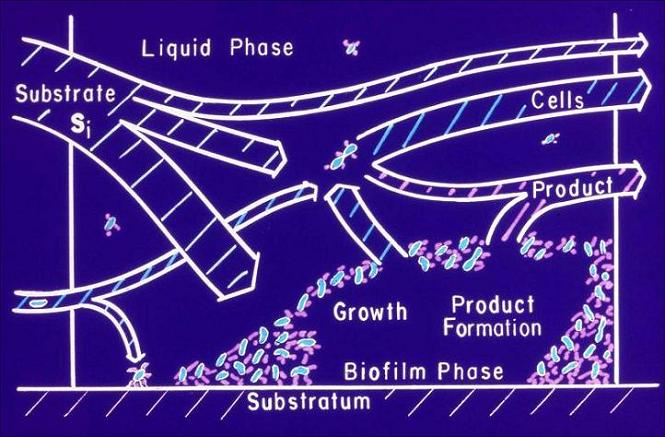
Figure 1. Biofilm Processes.
There are several important fundamental aspects of biofilm behavior which are important to mention here. First we note that when microbial cells leave suspension and attach to a surface they may undergo a change in their genetic expression. For example new genes are expressed which turn on the synthesis of the EPS matrix. The second very important behavior is that biofilm cells produce organic signaling compounds which regulate biofilm behavior (Figure 2).
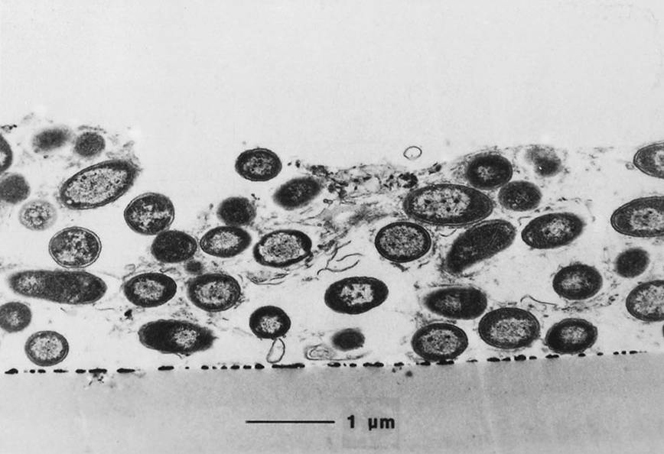
Figure 2. Cross Section of a Biofilm.
When microbial cells leave suspension and attach to a surface they may undergo a change in their genetic expression. Biofilm cells produce organic signaling compounds which regulate biofilm behavior (Figure 3).
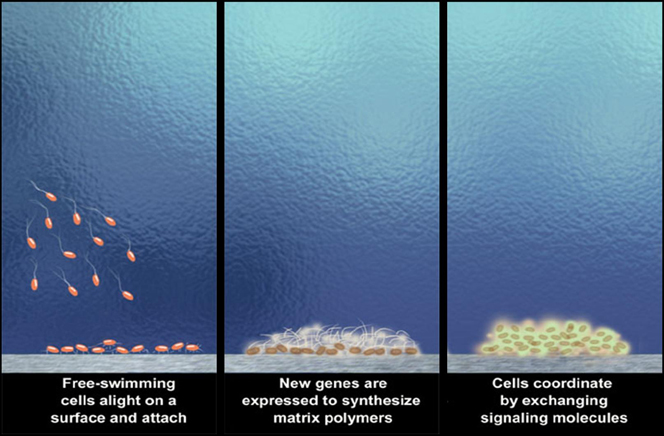
Figure 3. Biofilm Processes.
It is hypothesized that organic signaling compounds may be releases which cause the cells to produce enzymes which dissolve the EPS matrix and detach large numbers of cells into the aqueous phase (Figure 4).
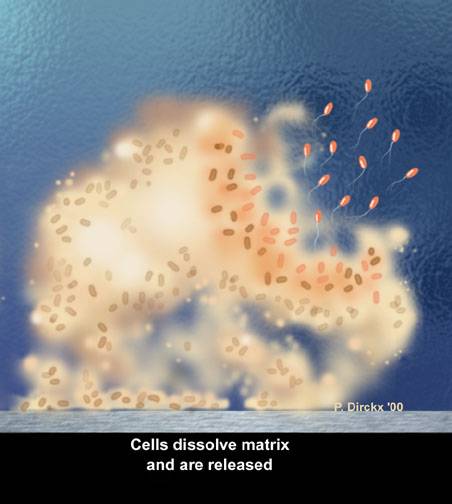
Figure 4. Cell Detachment in a Biofilm.
As the biofilm matures it is likely that many different microbial species will develop and coexist with each other. Finally, the last and likely one of the more significant observations of biofilm behavior is that biofilms, for several reasons which will be discussed later, are resistant to attack by antimicrobial agents and biocides (Figure 5).
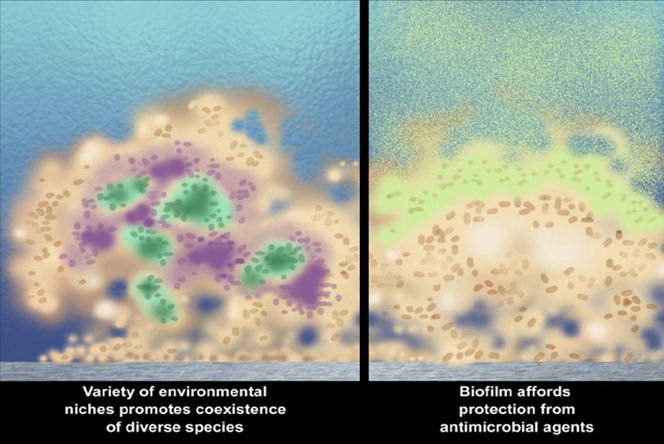
Figure 5. Biofilm Coexistence Resistance to Antibiotics.